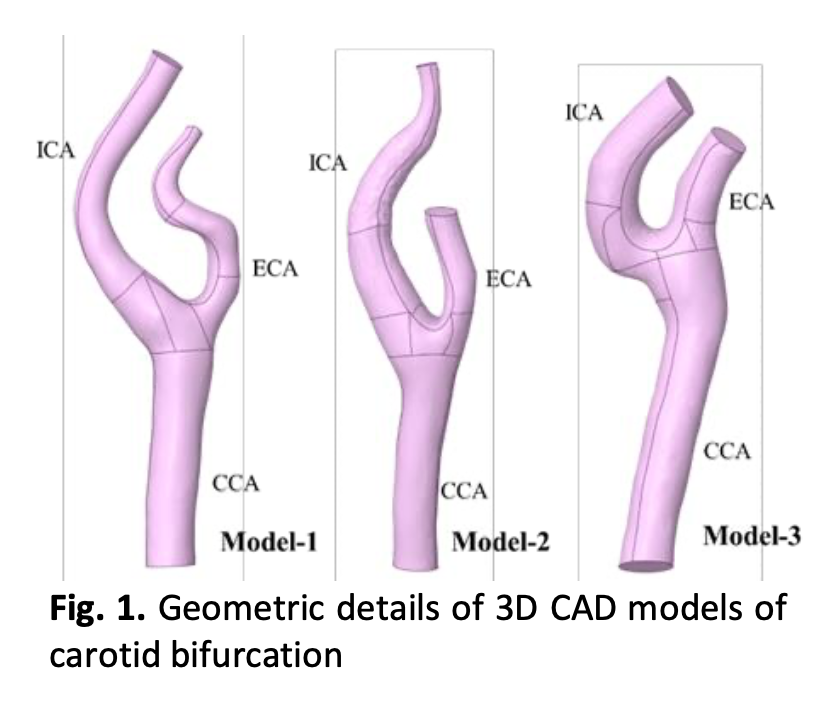Influence of Altered Pressures on Flow Dynamics in Carotid Bifurcation System using Numerical Methods
DOI:
https://doi.org/10.37934/arfmts.97.1.4761Keywords:
Carotid bifurcation, ANSYS Fluent, altered blood pressure, CFD, blood flowAbstract
The application of numerical methods like CFD to understand hemodynamics in arteries has excellent potential to solve complex flow problems. In recent years, CFD has been primarily used in the hemodynamics of the carotid artery due to advances in computational resources. This technique is widely used to obtain knowledge on hemodynamics, predict the risk factors for the development and progression of the atherosclerotic lesion, and analyze local flow profiles due to changes in the carotid artery geometry. This fundamental study will be supportive in observing the blood flow behavior through arteries and studying arterial diseases. The present study investigates three different subject-specific carotid bifurcation models under altered blood pressure conditions. Subject-specific 3D carotid bifurcation modeling is carried out using Materialize software. Unsteady flow simulation is conducted in ANSYS Fluent under the rigid wall and Newtonian conditions. The haemodynamic parameters such as vorticity, helicity, and time-averaged wall shear stress (TAWSS) were evaluated to understand better the beginning and progression of atherosclerotic plaques in the bifurcation. Also, the influence of geometric variation in the bifurcation region was investigated, and it was observed that this region causes significant vortex formation zones. A noticeable reduction in velocity and backflow formation was observed, which reduced the shear stress. It is established that the regions of low TAWSS along the bifurcation region are likely to develop atherosclerosis.
Downloads

































